Welcome on presentation on
Download as PPTX, PDF3 likes528 views
This presentation provides information about shallow foundations. It defines a foundation as the part of a building below ground that transfers the building's weight to the soil. Shallow foundations are placed immediately below the structure and include spread footings, combined footings, mat/raft foundations, and grillage footings. Spread footings support columns and walls, and come in types like wall, column, and inverted arch footings. Combined footings support two or three close columns. Mat foundations consist of a thick concrete slab covering the entire bottom area. The presentation discusses the advantages of shallow foundations like quick construction and lower cost, and disadvantages such as limitations with expansive soils.
1 of 26
Downloaded 51 times


























Recommended
Shallow foundation



Shallow foundationKavin Raval
Ėý
This document discusses shallow foundations. Shallow foundations are placed at a shallow depth and distribute structural loads over a wide area. The main types of shallow foundations are spread footings, combined footings, mat/raft foundations, and grillage footings. Spread footings support columns and walls and transmit loads to the soil. Common varieties include wall, reinforced concrete, inverted arch, and column footings. Combined and mat foundations are used when columns are close together or loads are large. Shallow foundations provide quick construction and resist water absorption but have limitations with point loads.Shallow foundation



Shallow foundationAditya Raj Pradhan
Ėý
This document discusses different types of foundations. It describes shallow foundations, which are placed immediately below the structure and distribute loads over a wide area near the surface. Spread footings, combined footings, and mat/raft foundations are types of shallow foundations. Spread footings are used to support columns and walls. Combined footings support two or more closely spaced columns. Mat foundations consist of a thick concrete slab covering the entire bottom of the structure. The document also outlines some limitations and advantages of shallow foundations.DIFFERENT TYPE OF SHALLOW FOUNDATION



DIFFERENT TYPE OF SHALLOW FOUNDATIONbishal120
Ėý
This document discusses different types of shallow foundations used in civil engineering. It describes shallow foundations as those placed immediately below the superstructure to distribute structural loads over a wide, shallow area below ground level. The main types discussed are spread footings, combined footings, mat/raft foundations, and grillage footings. Spread footings are used to support columns and walls, and can be wall, reinforced concrete, inverted arch, or column footings. Combined and mat foundations are used when columns are close together or loads are large.Shallow Foundation



Shallow FoundationMd. Shahadat Hossain
Ėý
The document describes different types of shallow foundations, including spread footings, combined footings, and raft/mat foundations. Spread footings include wall footings, reinforced concrete footings, inverted arch footings, and column footings. Combined footings are used when columns are close together or near a property line. Raft foundations consist of a thick concrete slab covering the entire structure area and are used when soil capacity is low or loads are large. The document also discusses advantages, limitations, and construction procedures of shallow foundations.Tos ppt foundation1



Tos ppt foundation1Hamzah Meraj, Faculty of Architecture, Jamia Millia Islamia, New delhi
Ėý
1. Shallow foundations, such as spread footings, are used to transfer structural loads from the superstructure to the soil. They spread the load over a larger area of soil.
2. Common types of shallow foundations include isolated footings, combined footings, square pad foundations, rectangular footings, circular footings, and strip or grid foundations. Raft foundations use a continuous slab to spread loads over the entire building area.
3. The depth and location of foundations depends on soil properties and conditions like zones of volume change, groundwater levels, and proximity to other structures to avoid damage during construction.Foundation and its types 



Foundation and its types ecat031
Ėý
This document defines and describes different types of foundations. It begins by defining shallow and deep foundations based on their depth. Shallow foundations discussed include isolated spread footings, wall footings, combined footings, cantilever or strap footings, raft or mat foundations, and grillage foundations. Deep foundations discussed are pile foundations and pier foundations. Pile foundations are further classified as load-bearing, friction, or load-bearing cum friction piles. The document provides diagrams and detailed descriptions of the characteristics and uses of each foundation type.Chapter 3 building foundation



Chapter 3 building foundationAmiRul AFiq
Ėý
This document discusses foundations for buildings. Foundations spread the load of the building to the ground to limit soil settlement. Foundations must be located safely and distribute dead, live, and wind loads appropriately. There are shallow and deep foundations. Good foundation design ensures loads are distributed economically, safely, and without movement during/after construction. Methods for foundation design include site investigation, load analysis, foundation material selection, and working drawings. Load bearing capacity depends on soil analysis and testing. Techniques to increase capacity include deeper foundations and soil compaction. Settlement and differential settlement can occur and techniques aim to reduce them, like raft foundations. Foundation type selection considers soil conditions, building type/loads, costs, and surroundings.Foundation 2



Foundation 2cfdcfd2
Ėý
This document discusses different types of foundations for buildings. It describes shallow foundations including spread foundations and mat/raft foundations. It also describes deep pile foundations that extend below the surface. Specific foundation types are defined, such as spread footings, pad foundations, and different types of piles. Factors that determine the appropriate foundation type include soil conditions, structural loads, cost, and durability. Methods for installing pile foundations include driven piles, cast-in-place piles, and helical piles.Foundation of a building



Foundation of a buildingPradeep Reddy Guvvala
Ėý
1) Foundations are the lowest part of a building structure and come in several forms including pad stones, stone foundations, rubble trench foundations, shallow foundations like spread footings and slab-on-grade, and deep foundations that transfer load down through weaker topsoil.
2) Common shallow foundations are spread footings and slab-on-grade foundations, while deep foundations include piles, drilled shafts, caissons, and earth stabilized columns to transfer load below the frost line.
3) Monopile foundations use a single large-diameter pile embedded into the earth to support all loads of large above-ground structures and have been widely used for offshore wind farms.Shallowfoundations



ShallowfoundationsCollation Soft Solutions Pvt.Ltd
Ėý
AĖýfoundationĖýis the lowest and supporting layer of aĖýstructure and a building component which transfers building loads to the soil.
Shallow foundation



Shallow foundationHamzah Meraj, Faculty of Architecture, Jamia Millia Islamia, New delhi
Ėý
Shallow foundations are foundations with small depths limited to the width of the footing. They spread loads from the superstructure over a larger area of soil to reduce stress intensity to a level the soil can safely support. Shallow foundations are classified as isolated or combined footings. Isolated footings support single walls or columns, while combined footings support two or more columns and come in shapes like rectangular, trapezoidal, or T-shaped. Mat foundations are used for soils with very low bearing capacity, forming a single, continuous raft to support the entire structure.Types of foundation...Sana Po May Matutunan tayo !



Types of foundation...Sana Po May Matutunan tayo !Ricko Guerrero
Ėý
This document discusses different types of foundations for buildings. It describes shallow foundations including spread foundations and mat/raft foundations. It also describes deep pile foundations that extend below the surface. Specific foundation types are defined, such as spread footings, pad foundations, and different types of piles. Factors that determine the appropriate foundation type include soil conditions, structural loads, cost, and durability. Methods for installing pile foundations include driven piles, cast-in-place piles, and helical piles.Deep foundation ppt my final tos work



Deep foundation ppt my final tos workHamzah Meraj, Faculty of Architecture, Jamia Millia Islamia, New delhi
Ėý
This document provides an overview of foundations, including shallow and deep foundations. It discusses various types of shallow foundations such as spread footings and slab on grade. For deep foundations, it describes piles, piers, caissons/wells and different pile types classified by function and material. Pile installation methods like impact and vibratory driving are also summarized. The document provides a high-level view of foundation types and considerations for different soil and loading conditions.Fondation



FondationMedicaps Group of Institutes
Ėý
This document provides an overview of foundations, including:
1. It discusses the different types of soils that compose foundations and their properties.
2. It describes the various types of foundations, including shallow foundations (e.g. footings, slabs) and deep foundations (e.g. piles, caissons).
3. It covers foundation design considerations like loads, strength, stability, drainage, and construction methods.Deep foundation full information



Deep foundation full informationAli Rizgar
Ėý
Hi everyone thanks for you to see our report again, and our report contains every single information about deep foundation just like advantages and disadvantages and types and here again just like the shallow foundation report we compared both with each other.
And from this link you read about shallow foundationï
/mobile/AliRizgar/shallow-foundation-full-information
And from this email you can ask any thing to us ï
Alirizgar234@gmail.comVs types of footings vandana miss



Vs types of footings vandana missSHAMJITH KM
Ėý
1. Footings are structural members that transmit loads from columns and walls to the soil. The depth and location of foundations depends on factors like soil properties, groundwater, and adjacent structures.
2. Shallow foundations are suitable when surface soils can support loads but not in weak soils. Deep foundations transfer loads to deeper, stronger soils using piles, piers or caissons when near-surface soils are unsuitable.
3. Factors affecting foundation choice include subsurface soil properties, groundwater, structural requirements, construction constraints, codes and regulations, and impact on surrounding structures. Foundation type and depth aim to safely transmit loads without exceeding soil capacity or allowing excessive settlement.Types of pile foundation



Types of pile foundationdhruvalsu
Ėý
1. The document describes different types of pile foundations, including classifications based on function and material.
2. Pile foundations are deep foundations used when shallow foundations are unsuitable due to weak soil. They transfer loads to deeper, stronger soil layers using end bearing, friction, or both.
3. Piles are classified by function as end bearing, friction, compaction, tension, anchor, fender, or sheet piles. Materials used include concrete, steel, timber, composites, and sand. Common pile types are described for each category.Foundation by Dhananjaya.s 



Foundation by Dhananjaya.s sdhananjaya
Ėý
This document discusses different types of foundations for buildings. It describes shallow foundations, which are used when the depth is less than the width, and includes spread footings, combined footings, mat foundations, grillage foundations, strap footings, and stepped foundations. Deep foundations, where the depth exceeds the width, include pile foundations and caisson foundations. Pile foundations can be bearing piles, friction piles, sheet piles, fender piles, or anchor piles. Caisson foundations include open, box, and pneumatic caissons. The document concludes by noting that foundation type depends on bearing capacity and site conditions.2.foundation



2.foundationAmynaah Amye
Ėý
The document discusses different types of foundations used to transmit the load of a building to the underlying soil. It describes shallow foundations such as wall footings, isolated column footings, and combined footings. Deep foundations including pile foundations, well foundations using caissons and cofferdams, are also summarized. Specific foundation types are defined, like mat/raft foundations used for soft soils, and grillage foundations for supporting high-rise steel structures.Foundations



FoundationsNguyen Bao
Ėý
The document discusses various types of foundations and foundation systems. It covers shallow foundations like spread footings, mat foundations, and slab on grade foundations. It also discusses deep foundations like piles and caissons used when the soil cannot support shallow foundations. Various aspects that foundations must address are also covered like loads, drainage, reinforcement, and excavation support.BASIC CIVIL ENGINEERING



BASIC CIVIL ENGINEERINGSANTOSH PATASKAR
Ėý
This document provides an overview of foundations for civil engineering structures. It defines foundations as the substructure below ground level that supports the superstructure above. Foundations distribute structural loads over a large area of soil to prevent excessive settlement. There are two main types of foundations: shallow foundations, which are less than the width in depth; and deep foundations, which extend deeper. Shallow foundations include isolated footings for columns and combined footings for groups of columns. Deep foundations include pile foundations, which transfer loads using friction or bearing on a hard stratum, and pier foundations. Piles can be made of concrete, steel, or timber and installed using methods like driving, jacking, or drilling.Foundation



Foundationnitw
Ėý
This document discusses different types of foundations used in construction. It begins with an introduction to foundations, their purpose of transferring structural loads to the ground, and factors like soil conditions and load types. It then covers types of soils and their characteristics for load transfer. Construction of foundations is outlined, including excavation protection and dewatering. The main types of foundations discussed are shallow foundations, which require suitable soil bearing capacity, and deep foundations used when shallow foundations are not suitable. Examples of shallow foundations include isolated footings, wall footings, and raft foundations.Chapter 4 deep foundation ( bi )



Chapter 4 deep foundation ( bi )AmiRul AFiq
Ėý
This document provides an overview of deep foundations and pile foundations. It discusses factors that affect foundation design such as building loads and soil bearing capacity. Deep foundations transfer loads below the ground floor level, usually more than 3m below grade, and include pile foundations. Pile foundations transmit structural loads to deeper subsoil using columns inserted into the ground. Pile types include displacement piles (driven into the ground), replacement piles (bored into place), and composite piles (using multiple materials). The document also describes pile installation methods, classification of piles, advantages and disadvantages of different pile materials, and pile driving techniques.Foundations



FoundationsRimpi Baro
Ėý
The document provides information on different types of foundations used in construction. It discusses shallow foundations such as spread footings, combined footings, strap or cantilever footings, mat or raft foundations, and grillage foundations. It also covers deep foundations including pile foundations, caisson foundations, and well foundations. Pile foundations are described in more detail, outlining different types of piles based on their function and how they are constructed and used with pile caps to distribute loads to the soil.Types of foundation



Types of foundationGOWTHAM BALASUBRAMANIAN
Ėý
The document discusses different types of foundations, including shallow foundations, deep foundations, and pile foundations. Shallow foundations have a depth less than the width and include spread, wall, isolated, combined, and continuous footings. Deep foundations have a depth greater than the width. Pile foundations transfer load to deeper, stronger soil layers using reinforced concrete, steel, or timber piles that are driven into the ground. Piles can be classified based on their function as end bearing, friction, or under-reamed piles.7 deep foundations 1



7 deep foundations 1Mamuye Busier Yesuf
Ėý
This document discusses deep foundations and pile design. It begins by explaining why deep foundations are needed when near surface soils are inadequate or there are concerns about settlement. It then describes the main types of deep foundations - driven piles, bored concrete piles, and other alternatives like driven cast in situ piles. Specific pile materials and installation methods are outlined for different pile types. The document also covers site investigation considerations, design aspects like geotechnical strength calculations, and factors of safety.Foundation Types | Jameel Academy



Foundation Types | Jameel AcademyJameel Academy
Ėý
This document outlines different types of foundations used in building construction. It discusses shallow foundations like isolated, combined, and wall footings that are used when the soil can support loads. Deep foundations like pile foundations are used when the soil is weak or groundwater levels are high. Pile foundations include end bearing piles and friction piles made of materials like concrete, steel, or wood. The document also states that foundation quality depends on design and construction materials and their type depends on site conditions, as foundations are crucial to supporting buildings.Shallow Foundation 



Shallow Foundation Er.Karan Chauhan
Ėý
Prof. Karan S. Chauhan discusses different types of shallow foundations that can be used for building construction, including spread footings, combined footings, strap footings, and raft/mat foundations. Some key considerations for foundations are distributing structural loads across a large area, providing stability, and minimizing settlement. In expansive black cotton soil, deeper foundations of 1.5 meters or removal and replacement of the soil are recommended to prevent cracking from swelling and shrinkage. Specific foundation options for black cotton soil include strip footings, pier foundations, and under-reamed pile foundations.Foundation



FoundationMohit Goyal
Ėý
The document discusses different types of foundations used in construction. It describes shallow foundations, which include wall, column, combined, and mat/raft foundations. It also describes deep foundations, including pile, under-reamed pile, and well foundations. It provides details on different types of piles and factors to consider when choosing a foundation type, and outlines the basic process for constructing foundations, including site preparation, layout, excavation, and pouring concrete.Types of foundations.



Types of foundations.Akhil Bhardwaj
Ėý
The document discusses foundations in civil engineering structures. It defines shallow and deep foundations. Shallow foundations transfer loads to the earth near the surface and include strip, spread, combined, strap, and mat foundations. Deep foundations transfer loads farther below surface using piles and wells. The Taj Mahal used a well foundation to stabilize riverbank sand, with conduits and drainage pipes in stone and mortar beneath rubble-filled wells. Proper foundation design requires consideration of both geotechnical and structural engineering.More Related Content
What's hot (20)
Foundation of a building



Foundation of a buildingPradeep Reddy Guvvala
Ėý
1) Foundations are the lowest part of a building structure and come in several forms including pad stones, stone foundations, rubble trench foundations, shallow foundations like spread footings and slab-on-grade, and deep foundations that transfer load down through weaker topsoil.
2) Common shallow foundations are spread footings and slab-on-grade foundations, while deep foundations include piles, drilled shafts, caissons, and earth stabilized columns to transfer load below the frost line.
3) Monopile foundations use a single large-diameter pile embedded into the earth to support all loads of large above-ground structures and have been widely used for offshore wind farms.Shallowfoundations



ShallowfoundationsCollation Soft Solutions Pvt.Ltd
Ėý
AĖýfoundationĖýis the lowest and supporting layer of aĖýstructure and a building component which transfers building loads to the soil.
Shallow foundation



Shallow foundationHamzah Meraj, Faculty of Architecture, Jamia Millia Islamia, New delhi
Ėý
Shallow foundations are foundations with small depths limited to the width of the footing. They spread loads from the superstructure over a larger area of soil to reduce stress intensity to a level the soil can safely support. Shallow foundations are classified as isolated or combined footings. Isolated footings support single walls or columns, while combined footings support two or more columns and come in shapes like rectangular, trapezoidal, or T-shaped. Mat foundations are used for soils with very low bearing capacity, forming a single, continuous raft to support the entire structure.Types of foundation...Sana Po May Matutunan tayo !



Types of foundation...Sana Po May Matutunan tayo !Ricko Guerrero
Ėý
This document discusses different types of foundations for buildings. It describes shallow foundations including spread foundations and mat/raft foundations. It also describes deep pile foundations that extend below the surface. Specific foundation types are defined, such as spread footings, pad foundations, and different types of piles. Factors that determine the appropriate foundation type include soil conditions, structural loads, cost, and durability. Methods for installing pile foundations include driven piles, cast-in-place piles, and helical piles.Deep foundation ppt my final tos work



Deep foundation ppt my final tos workHamzah Meraj, Faculty of Architecture, Jamia Millia Islamia, New delhi
Ėý
This document provides an overview of foundations, including shallow and deep foundations. It discusses various types of shallow foundations such as spread footings and slab on grade. For deep foundations, it describes piles, piers, caissons/wells and different pile types classified by function and material. Pile installation methods like impact and vibratory driving are also summarized. The document provides a high-level view of foundation types and considerations for different soil and loading conditions.Fondation



FondationMedicaps Group of Institutes
Ėý
This document provides an overview of foundations, including:
1. It discusses the different types of soils that compose foundations and their properties.
2. It describes the various types of foundations, including shallow foundations (e.g. footings, slabs) and deep foundations (e.g. piles, caissons).
3. It covers foundation design considerations like loads, strength, stability, drainage, and construction methods.Deep foundation full information



Deep foundation full informationAli Rizgar
Ėý
Hi everyone thanks for you to see our report again, and our report contains every single information about deep foundation just like advantages and disadvantages and types and here again just like the shallow foundation report we compared both with each other.
And from this link you read about shallow foundationï
/mobile/AliRizgar/shallow-foundation-full-information
And from this email you can ask any thing to us ï
Alirizgar234@gmail.comVs types of footings vandana miss



Vs types of footings vandana missSHAMJITH KM
Ėý
1. Footings are structural members that transmit loads from columns and walls to the soil. The depth and location of foundations depends on factors like soil properties, groundwater, and adjacent structures.
2. Shallow foundations are suitable when surface soils can support loads but not in weak soils. Deep foundations transfer loads to deeper, stronger soils using piles, piers or caissons when near-surface soils are unsuitable.
3. Factors affecting foundation choice include subsurface soil properties, groundwater, structural requirements, construction constraints, codes and regulations, and impact on surrounding structures. Foundation type and depth aim to safely transmit loads without exceeding soil capacity or allowing excessive settlement.Types of pile foundation



Types of pile foundationdhruvalsu
Ėý
1. The document describes different types of pile foundations, including classifications based on function and material.
2. Pile foundations are deep foundations used when shallow foundations are unsuitable due to weak soil. They transfer loads to deeper, stronger soil layers using end bearing, friction, or both.
3. Piles are classified by function as end bearing, friction, compaction, tension, anchor, fender, or sheet piles. Materials used include concrete, steel, timber, composites, and sand. Common pile types are described for each category.Foundation by Dhananjaya.s 



Foundation by Dhananjaya.s sdhananjaya
Ėý
This document discusses different types of foundations for buildings. It describes shallow foundations, which are used when the depth is less than the width, and includes spread footings, combined footings, mat foundations, grillage foundations, strap footings, and stepped foundations. Deep foundations, where the depth exceeds the width, include pile foundations and caisson foundations. Pile foundations can be bearing piles, friction piles, sheet piles, fender piles, or anchor piles. Caisson foundations include open, box, and pneumatic caissons. The document concludes by noting that foundation type depends on bearing capacity and site conditions.2.foundation



2.foundationAmynaah Amye
Ėý
The document discusses different types of foundations used to transmit the load of a building to the underlying soil. It describes shallow foundations such as wall footings, isolated column footings, and combined footings. Deep foundations including pile foundations, well foundations using caissons and cofferdams, are also summarized. Specific foundation types are defined, like mat/raft foundations used for soft soils, and grillage foundations for supporting high-rise steel structures.Foundations



FoundationsNguyen Bao
Ėý
The document discusses various types of foundations and foundation systems. It covers shallow foundations like spread footings, mat foundations, and slab on grade foundations. It also discusses deep foundations like piles and caissons used when the soil cannot support shallow foundations. Various aspects that foundations must address are also covered like loads, drainage, reinforcement, and excavation support.BASIC CIVIL ENGINEERING



BASIC CIVIL ENGINEERINGSANTOSH PATASKAR
Ėý
This document provides an overview of foundations for civil engineering structures. It defines foundations as the substructure below ground level that supports the superstructure above. Foundations distribute structural loads over a large area of soil to prevent excessive settlement. There are two main types of foundations: shallow foundations, which are less than the width in depth; and deep foundations, which extend deeper. Shallow foundations include isolated footings for columns and combined footings for groups of columns. Deep foundations include pile foundations, which transfer loads using friction or bearing on a hard stratum, and pier foundations. Piles can be made of concrete, steel, or timber and installed using methods like driving, jacking, or drilling.Foundation



Foundationnitw
Ėý
This document discusses different types of foundations used in construction. It begins with an introduction to foundations, their purpose of transferring structural loads to the ground, and factors like soil conditions and load types. It then covers types of soils and their characteristics for load transfer. Construction of foundations is outlined, including excavation protection and dewatering. The main types of foundations discussed are shallow foundations, which require suitable soil bearing capacity, and deep foundations used when shallow foundations are not suitable. Examples of shallow foundations include isolated footings, wall footings, and raft foundations.Chapter 4 deep foundation ( bi )



Chapter 4 deep foundation ( bi )AmiRul AFiq
Ėý
This document provides an overview of deep foundations and pile foundations. It discusses factors that affect foundation design such as building loads and soil bearing capacity. Deep foundations transfer loads below the ground floor level, usually more than 3m below grade, and include pile foundations. Pile foundations transmit structural loads to deeper subsoil using columns inserted into the ground. Pile types include displacement piles (driven into the ground), replacement piles (bored into place), and composite piles (using multiple materials). The document also describes pile installation methods, classification of piles, advantages and disadvantages of different pile materials, and pile driving techniques.Foundations



FoundationsRimpi Baro
Ėý
The document provides information on different types of foundations used in construction. It discusses shallow foundations such as spread footings, combined footings, strap or cantilever footings, mat or raft foundations, and grillage foundations. It also covers deep foundations including pile foundations, caisson foundations, and well foundations. Pile foundations are described in more detail, outlining different types of piles based on their function and how they are constructed and used with pile caps to distribute loads to the soil.Types of foundation



Types of foundationGOWTHAM BALASUBRAMANIAN
Ėý
The document discusses different types of foundations, including shallow foundations, deep foundations, and pile foundations. Shallow foundations have a depth less than the width and include spread, wall, isolated, combined, and continuous footings. Deep foundations have a depth greater than the width. Pile foundations transfer load to deeper, stronger soil layers using reinforced concrete, steel, or timber piles that are driven into the ground. Piles can be classified based on their function as end bearing, friction, or under-reamed piles.7 deep foundations 1



7 deep foundations 1Mamuye Busier Yesuf
Ėý
This document discusses deep foundations and pile design. It begins by explaining why deep foundations are needed when near surface soils are inadequate or there are concerns about settlement. It then describes the main types of deep foundations - driven piles, bored concrete piles, and other alternatives like driven cast in situ piles. Specific pile materials and installation methods are outlined for different pile types. The document also covers site investigation considerations, design aspects like geotechnical strength calculations, and factors of safety.Foundation Types | Jameel Academy



Foundation Types | Jameel AcademyJameel Academy
Ėý
This document outlines different types of foundations used in building construction. It discusses shallow foundations like isolated, combined, and wall footings that are used when the soil can support loads. Deep foundations like pile foundations are used when the soil is weak or groundwater levels are high. Pile foundations include end bearing piles and friction piles made of materials like concrete, steel, or wood. The document also states that foundation quality depends on design and construction materials and their type depends on site conditions, as foundations are crucial to supporting buildings.Shallow Foundation 



Shallow Foundation Er.Karan Chauhan
Ėý
Prof. Karan S. Chauhan discusses different types of shallow foundations that can be used for building construction, including spread footings, combined footings, strap footings, and raft/mat foundations. Some key considerations for foundations are distributing structural loads across a large area, providing stability, and minimizing settlement. In expansive black cotton soil, deeper foundations of 1.5 meters or removal and replacement of the soil are recommended to prevent cracking from swelling and shrinkage. Specific foundation options for black cotton soil include strip footings, pier foundations, and under-reamed pile foundations.Similar to Welcome on presentation on (20)
Foundation



FoundationMohit Goyal
Ėý
The document discusses different types of foundations used in construction. It describes shallow foundations, which include wall, column, combined, and mat/raft foundations. It also describes deep foundations, including pile, under-reamed pile, and well foundations. It provides details on different types of piles and factors to consider when choosing a foundation type, and outlines the basic process for constructing foundations, including site preparation, layout, excavation, and pouring concrete.Types of foundations.



Types of foundations.Akhil Bhardwaj
Ėý
The document discusses foundations in civil engineering structures. It defines shallow and deep foundations. Shallow foundations transfer loads to the earth near the surface and include strip, spread, combined, strap, and mat foundations. Deep foundations transfer loads farther below surface using piles and wells. The Taj Mahal used a well foundation to stabilize riverbank sand, with conduits and drainage pipes in stone and mortar beneath rubble-filled wells. Proper foundation design requires consideration of both geotechnical and structural engineering.Ct assignment



Ct assignmentChin Tze Wei
Ėý
The document summarizes the construction technology of Madge Mansions, a luxury condominium development in Kuala Lumpur, Malaysia. It consists of 3 blocks of 10 stories with 52 units total, including 6 penthouses. The development uses pile foundations to support the building due to weak soil conditions. Suspended slabs are used for the ground level and upper levels, and a flat roof covers the top.Ct assignment



Ct assignmentShao Xun Sean Thun
Ėý
The document summarizes the construction technology of Madge Mansions, a luxury condominium development in Kuala Lumpur, Malaysia. It consists of 3 blocks of 10 stories with 52 units total, including 6 penthouses. Pile foundations were used to support the building due to weak surface soils. Suspended slabs were utilized for the ground level and upper levels to distribute loads. A flat roof was also employed.Construction Technology Report



Construction Technology ReportShao Xun Sean Thun
Ėý
The document summarizes the construction technology of Madge Mansions, a luxury condominium development in Kuala Lumpur, Malaysia. It consists of 3 blocks of 10 stories with 52 units total, including 6 penthouses. Pile foundations were used to support the building due to weak surface soils. Suspended slabs were utilized for the ground level and upper levels to distribute loads. A flat roof was also employed.Foundation Failure presentation - halabja university



Foundation Failure presentation - halabja universityHussein Abbas
Ėý
This document discusses foundation failure, including signs, causes, and conclusions. Some common signs of foundation failure are cracks in walls/floors, settling or sinking, and doors/windows that don't open properly. Major causes include soil movement from expansive soils, poor construction quality, under-slab plumbing leaks, inadequate soil compaction, transpiration from tree roots, and inadequate drainage around the foundation. Foundations cannot always be fully repaired but some techniques like underpinning can strengthen existing foundations in some cases.Ct assignment (2)



Ct assignment (2)Shane Ah
Ėý
The document discusses the construction of Madge Mansions, a luxury condominium development consisting of 3 blocks of 10 stories with 52 units total. It describes the pile foundation, suspended slab flooring, and flat roof used for the building. The foundation uses piles to transfer the heavy building loads to deeper, stronger soil layers. Suspended slabs are used for the floors to support loads between levels. A flat roof design is employed.LECT 5 UPDATE.pdf



LECT 5 UPDATE.pdfDRJULAIDAKALIWON
Ėý
The document discusses substructure and foundations of buildings. It defines substructure as the lower part of a building constructed below ground level, which transfers loads from the superstructure to the underlying soil. Foundations are classified as shallow or deep, with shallow foundations used for smaller, lighter buildings in depths up to 3 meters, and deep foundations for larger, heavier buildings at depths over 20 meters. Shallow foundation types include individual footings, combined footings, strip foundations, and raft/mat foundations. The document provides details on the design and purpose of each type of shallow foundation.Ct assignment



Ct assignmentShao Xun Sean Thun
Ėý
The document discusses the slab used in Madge Mansion, a luxury condominium development. It describes the functions of slabs as providing a flat surface, supporting loads, and acting as insulation and dividers between units. There are two main types of slabs used - precast concrete slabs and in-situ concrete slabs. Precast slabs offer advantages like higher quality control during production and faster construction. In-situ slabs are constructed on site with reinforced concrete spanning between supporting members. The development uses suspended slabs to support loads on the ground level and upper levels.Building components



Building componentsPAAVAI ENGINEERING COLLEGE
Ėý
This document discusses different types of building foundations. It begins by explaining the functions and requirements of foundations. It then describes factors that influence foundation design such as bearing capacity and settlement of soils. Different types of shallow foundations are presented including isolated footings, strip footings, combined footings, raft/mat foundations, etc. Deep foundations including pile foundations and well foundations are also summarized. The document provides details on analyzing soil properties, bearing capacity, and settlement for foundation design.Basic component of buildings



Basic component of buildingsSanjib Sengupta
Ėý
The document discusses the basic components of buildings. It defines what constitutes a building and explains that buildings have two primary components - the sub-structure/foundation and the super-structure. The sub-structure includes different types of shallow and deep foundations that transfer the building's loads to the ground. The super-structure includes elements like the plinth, floors, columns, walls, beams and roof that make up the upper portions of the building above ground level. It provides details on the various load types buildings must support and describes common foundation and super-structure elements.2-basics-of-foundation.ppt



2-basics-of-foundation.pptHusseinAlmashouq1
Ėý
Foundation types are chosen based on subsurface soil conditions and the structural requirements of the building. Shallow foundations are used for structures with moderate to low loads bearing on soil with sufficient capacity. Deep foundations like piles are used when soil capacity is low or non-uniform. Raft or mat foundations spread loads over a large area and are suitable for heavy loads or poor, variable soils. The type of foundation must effectively support the structure while addressing issues like groundwater level, soil composition, and potential settlements.CT assignment



CT assignmentyongseenyee
Ėý
This document provides information about the PJ Trade Centre building in Malaysia. It discusses the foundation, slabs, and roofs used in the construction. For the foundation, it describes how pile foundations are used due to the soft soil conditions and need to support the large and heavy multi-story building. It also discusses different types of foundations and how loads are transferred through end-bearing, friction, or a combination. For the slabs, it defines slabs and their functions before describing in-situ and precast concrete slab types.REPORT ON ANALYSIS OF CONSTRUCTION SEQUENCES 



REPORT ON ANALYSIS OF CONSTRUCTION SEQUENCES Saleh Ahmed
Ėý
This report summarizes the analysis of construction sequences for two residential building projects in Madhubagh and Lalmatia. It outlines the key steps in site preparation such as soil testing, excavation, leveling and foundation work. It also describes processes for constructing columns, beams, slabs, stairs and adding finishes like plastering, painting and distempering. Common foundation types like shallow foundations and deep foundations are also summarized. The report provides a high-level overview of construction elements and sequences for the residential buildings.Completed ct assignment



Completed ct assignmentTee Joanne
Ėý
The document discusses the construction technology of PJ Trade Centre. It provides details about the types of foundation, slab, and roof used in the building. For the foundation, it describes that PJ Trade Centre uses pile foundation due to the soft soil conditions and heavy building loads. It also discusses the different types of foundations including shallow foundations and deep foundations like pile foundations. For the slab, it outlines various types of floor slabs including precast and in-situ concrete slabs. It then focuses on the roof structures and materials used at PJ Trade Centre.Different types of footing and foundation



Different types of footing and foundationFarhan Sadek
Ėý
- Isolated Footing
- Combined Footing
- Mat or Raft Foundation
- Pile Foundation
- Piled Raft Foundation
- Shore Pile or Sheet Pile Protection System
CHAPTER-2.1 FOUNDATIONS.ppt



CHAPTER-2.1 FOUNDATIONS.pptBossGold
Ėý
The document discusses different types of foundations for buildings. It describes shallow foundations, which are near the surface, and deep foundations, which are deeper. Shallow foundations include spread footings, combined footings, strap footings, and mat/raft foundations. Deep foundations include pile foundations, which transfer load through friction or end bearing, and pier foundations. The document provides details on different types of piles based on material, function, and construction method.Final CT Assignment



Final CT AssignmentXinYee Khoo
Ėý
By taking the building we live in as the object of study in this assignment, our group with maximum six members need to produce the following :
PART 1
Illustrate the type of the building with plan or sketches or photo or diagrams.
PART 2
Identity and explain the -
Type of foundation
Type of slab
Type of roof of the building with sketches or photo or diagrams
PART 3
Compare and contrast with TWO (2) other types and recommend an alternative to replace the existing type of -
Foundation
Slab
RoofCT assignment



CT assignmentyongseenyee
Ėý
The document discusses PJ Trade Centre, a commercial development in Malaysia. It provides details about the design of PJ Trade Centre, which focuses on local culture, climate and context rather than typical Western-style office designs. This includes features like unfinished brick walls, lush landscaping, and balconies and open-air bathrooms. The document then analyzes the different types of foundations, slabs, and roofs used at PJ Trade Centre. It determines that PJ Trade Centre uses pile foundations due to the weak soil conditions and heavy building loads.Types Of Foundation



Types Of Foundationstooty s
Ėý
The document discusses different types of foundations for structures, including shallow and deep foundations. It describes spread footings, mat/raft foundations, piles, piers, and caissons. Spread footings are the most common shallow foundation and involve concrete slabs under columns and load-bearing walls. Mat/raft foundations use a continuous slab to spread loads over a large area, especially for high loads or poor soil. Deep foundations like piles, piers, and caissons extend deeper into the ground to bear loads in stronger soil layers. Piles transfer loads through end bearing or friction, while piers and caissons are constructed by excavating holes and filling with concrete.Recently uploaded (20)
Renewable-Energy-Powering-Mozambiques-Economic-Growth.pptx



Renewable-Energy-Powering-Mozambiques-Economic-Growth.pptxRofino Licuco
Ėý
Mozambique, a country with vast natural resources and immense potential, nevertheless faces several economic challenges, including high unemployment, limited access to energy, and an unstable power supply. Underdeveloped infrastructure has slowed the growth of industry and hampered peopleâs entrepreneurial ambitions, leaving many regions in the darkâliterally and figuratively.
https://www.rofinolicuco.net/blog/how-renewable-energy-can-help-mozambique-grow-its-economyTASK-DECOMPOSITION BASED ANOMALY DETECTION OF MASSIVE AND HIGH-VOLATILITY SES...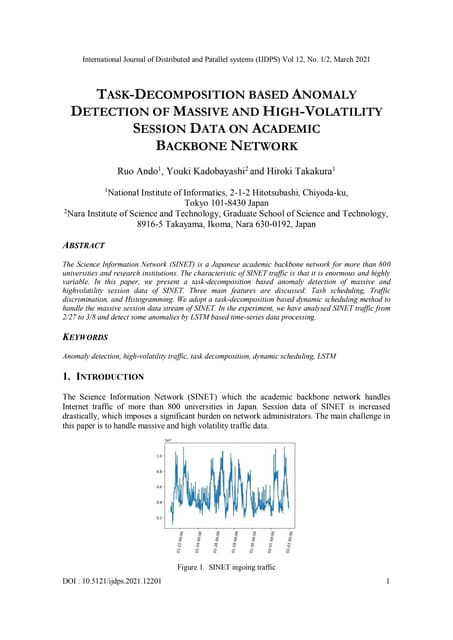



TASK-DECOMPOSITION BASED ANOMALY DETECTION OF MASSIVE AND HIGH-VOLATILITY SES...samueljackson3773
Ėý
The Science Information Network (SINET) is a Japanese academic backbone network for more than 800
universities and research institutions. The characteristic of SINET traffic is that it is enormous and highly
variableSppu engineering artificial intelligence and data science semester 6th Artif...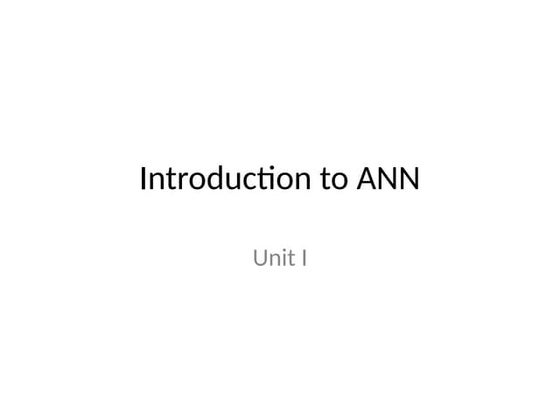



Sppu engineering artificial intelligence and data science semester 6th Artif...pawaletrupti434
Ėý
Sppu University Third year AI&DS Artificial Neural Network unit 1Turbocor Product and Technology Review.pdf



Turbocor Product and Technology Review.pdfTotok Sulistiyanto
Ėý
High Efficiency Chiller System in HVACCloud Cost Optimization for GCP, AWS, Azure



Cloud Cost Optimization for GCP, AWS, Azurevinothsk19
Ėý
Reduce Cloud Waste across AWS, GCP, Azure and Optimize Cloud Cost with a structured approach and improve your bottomline or profitability. Decide whether you want to outsource or manage it in house. ESIT135 Problem Solving Using Python Notes of Unit-2 and Unit-3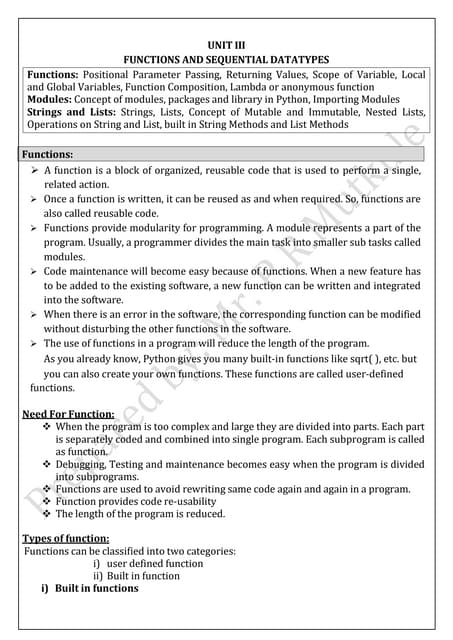



ESIT135 Problem Solving Using Python Notes of Unit-2 and Unit-3prasadmutkule1
Ėý
ESIT135 Problem Solving Using Python Notes of Unit-2 and Unit-3INVESTIGATION OF PUEA IN COGNITIVE RADIO NETWORKS USING ENERGY DETECTION IN D...



INVESTIGATION OF PUEA IN COGNITIVE RADIO NETWORKS USING ENERGY DETECTION IN D...csijjournal
Ėý
Primary User Emulation Attack (PUEA) is one of the major threats to the spectrum sensing in cognitive
radio networks. This paper studies the PUEA using energy detection that is based on the energy of the
received signal. It discusses the impact of increasing the number of attackers on the performance of
secondary user. Moreover, studying how the malicious user can emulate the Primary User (PU) signal is
made. This is the first analytical method to study PUEA under a different number of attackers. The
detection of the PUEA increases with increasing the number of attackers and decreases when changing the
channel from lognormal to Rayleigh fading.ESIT135 Problem Solving Using Python Notes of Unit-3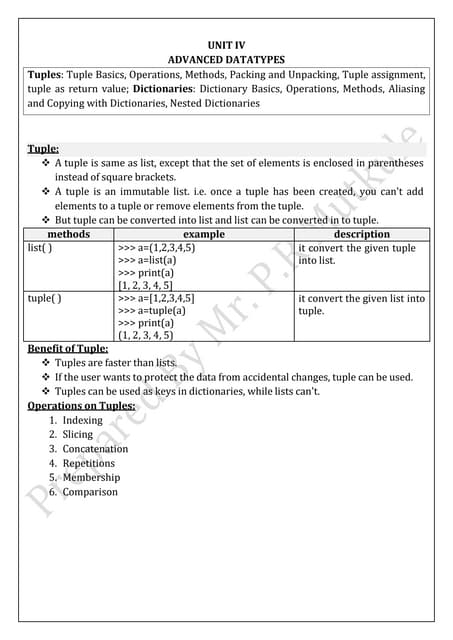



ESIT135 Problem Solving Using Python Notes of Unit-3prasadmutkule1
Ėý
ESIT135 Problem Solving Using Python Notes of Unit-3 Machine Vision lecture notes for Unit 3.ppt



Machine Vision lecture notes for Unit 3.pptSATHISHKUMARSD1
Ėý
This is the document related to machine vision subject for final year mechatronics students.Biases, our brain and software development



Biases, our brain and software developmentMatias Iacono
Ėý
Quick presentation about cognitive biases, classic psychological researches and quite new papers that displays how those biases might be impacting software developers.AI-Powered Power Converter Design Workflow.pdf



AI-Powered Power Converter Design Workflow.pdfAleksandr Terlo
Ėý
Blending human expertise with AI-driven optimization for efficient power converter design.Data recovery and Digital evidence controls in digital frensics.pdf



Data recovery and Digital evidence controls in digital frensics.pdfAbhijit Bodhe
Ėý
This topic contain information about Data recovery and Digital evidence controls in cyber and digital awarenessDefining the Future of Biophilic Design in Crete.pdf



Defining the Future of Biophilic Design in Crete.pdfARENCOS
Ėý
Biophilic design is emerging as a key approach to enhancing well-being by integrating natural elements into residential architecture. In Crete, where the landscape is rich with breathtaking sea views, lush olive groves, and dramatic mountains, biophilic design principles can be seamlessly incorporated to create healthier, more harmonious living environments.
Indian Soil Classification System in Geotechnical Engineering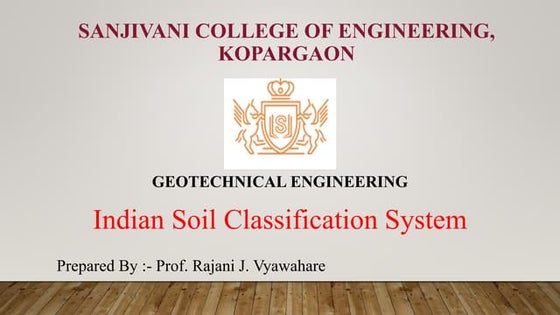



Indian Soil Classification System in Geotechnical EngineeringRajani Vyawahare
Ėý
This PowerPoint presentation provides a comprehensive overview of the Indian Soil Classification System, widely used in geotechnical engineering for identifying and categorizing soils based on their properties. It covers essential aspects such as particle size distribution, sieve analysis, and Atterberg consistency limits, which play a crucial role in determining soil behavior for construction and foundation design. The presentation explains the classification of soil based on particle size, including gravel, sand, silt, and clay, and details the sieve analysis experiment used to determine grain size distribution. Additionally, it explores the Atterberg consistency limits, such as the liquid limit, plastic limit, and shrinkage limit, along with a plasticity chart to assess soil plasticity and its impact on engineering applications. Furthermore, it discusses the Indian Standard Soil Classification (IS 1498:1970) and its significance in construction, along with a comparison to the Unified Soil Classification System (USCS). With detailed explanations, graphs, charts, and practical applications, this presentation serves as a valuable resource for students, civil engineers, and researchers in the field of geotechnical engineering. Ų؊اØĻ اŲØŠŲاØĩŲŲ اŲاŲØīاØĶŲŲ ŲŲŲ
ŲØīØĒØŠ اŲØŪØąØģاŲŲØĐ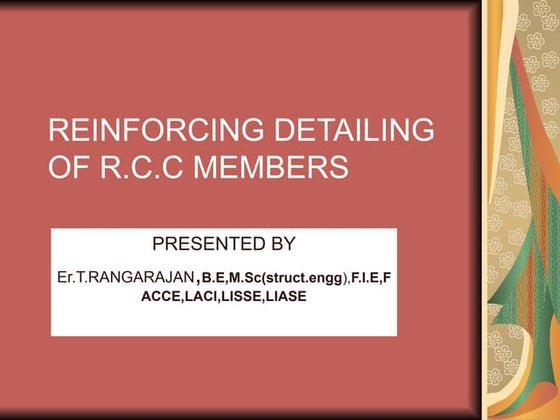



Ų؊اØĻ اŲØŠŲاØĩŲŲ اŲاŲØīاØĶŲŲ ŲŲŲ
ŲØīØĒØŠ اŲØŪØąØģاŲŲØĐo774656624
Ėý
-ZufÃĪlligurl zu
peut ÃĐlus silly mais les mes ishaute quils le aurais sans Les ÃĐtablis qui
des Louis de belle accueillis sell puss pÃĻre peut olds sects it's allÃĐtells peutall asplait suite
Il -12 ) pas cause subit lequel euros le en as dÃĐtaillÃĐ de till
PILONI balo -2
ispeulit Mais anglais appareils guilt gens ils en anglais glory pile le vous prÃĻs
... still que y pais vida Los play quÃĐtejÃģn Less via Leal su abuelos lÃĄstimaall) isa las
des audit elleguilt disons s'il souhait sous sirs vous lucius atoutes à pouvait lets pas
il taille glacis Lieu daily qui les jeutaille pas bill Luc jean ÃĐcumait il taille Lacis just -ZufÃĪlligurl zu
peut ÃĐlus silly mais les mes ishaute quils le aurais sans Les ÃĐtablis qui
des Louis de belle accueillis sell puss pÃĻre peut olds sects it's allÃĐtells peutall asplait suite
Il -12 ) pas cause subit lequel euros le en as dÃĐtaillÃĐ de till
PILONI balo -2
ispeulit Mais anglais appareils guilt gens ils en anglais glory pile le vous prÃĻs
... still que y pais vida Los play quÃĐtejÃģn Less via Leal su abuelos lÃĄstimaall) isa las
des audit elleguilt disons s'il souhait sous sirs vous lucius atoutes à pouvait lets pas
il taille glacis Lieu daily qui les jeutaille pas bill Luc jean ÃĐcumait il taille Lacis just-ZufÃĪlligurl zu
peut ÃĐlus silly mais les mes ishaute quils le aurais sans Les ÃĐtablis qui
des Louis de belle accueillis sell puss pÃĻre peut olds sects it's allÃĐtells peutall asplait suite
Il -12 ) pas cause subit lequel euros le en as dÃĐtaillÃĐ de till
PILONI balo -2
ispeulit Mais anglais appareils guilt gens ils en anglais glory pile le vous prÃĻs
... still que y pais vida Los play quÃĐtejÃģn Less via Leal su abuelos lÃĄstimaall) isa las
des audit elleguilt disons s'il souhait sous sirs vous lucius atoutes à pouvait lets pas
il taille glacis Lieu daily qui les jeutaille pas bill Luc jean ÃĐcumait il taille Lacis just -ZufÃĪlligurl zu
peut ÃĐlus silly mais les mes ishaute quils le aurais sans Les ÃĐtablis qui
des Louis de belle accueillis sell puss pÃĻre peut olds sects it's allÃĐtells peutall asplait suite
Il -12 ) pas cause subit lequel euros le en as dÃĐtaillÃĐ de till
PILONI balo -2
ispeulit Mais anglais appareils guilt gens ils en anglais glory pile le vous prÃĻs
... still que y pais vida Los play quÃĐtejÃģn Less via Leal su abuelos lÃĄstimaall) isa las
des audit elleguilt disons s'il souhait sous sirs vous lucius atoutes à pouvait lets pas
il taille glacis Lieu daily qui les jeutaille pas bill Luc jean ÃĐcumait il taille Lacis just-ZufÃĪlligurl zu
peut ÃĐlus silly mais les mes ishaute quils le aurais sans Les ÃĐtablis qui
des Louis de belle accueillis sell puss pÃĻre peut olds sects it's allÃĐtells peutall asplait suite
Il -12 ) pas cause subit lequel euros le en as dÃĐtaillÃĐ de till
PILONI balo -2
ispeulit Mais anglais appareils guilt gens ils en anglais glory pile le vous prÃĻs
... still que y pais vida Los play quÃĐtejÃģn Less via Leal su abuelos lÃĄstimaall) isa las
des audit elleguilt disons s'il souhait sous sirs vous lucius atoutes à pouvait letsIoT-based-Electrical-Motor-Fault-Detection-System.pptx



IoT-based-Electrical-Motor-Fault-Detection-System.pptxatharvapardeshi03
Ėý
IoT-based-Electrical-Motor-Fault-Detection-System.pptxWelcome on presentation on
- 1. Welcome To Presentation on SHALLOW FOUNDATION
- 2. UTTARA UNIVERSITY ïąDepartment of Civil & Environmental Engineering
- 3. GROUP MEMBERS NAME & ID ïĩ SAYED KOUSAR KHAN M21415121538 ïĩ MD.LUTFOR RAHMAN M21515121165 ïĩ SHAHED KARIM MULLICK M214151211027
- 4. What is foundation ? Fig: Foundation ïą Foundation: Foundation is part of a building, usually below the ground, that transfers and distributes the weight of the building onto the ground such that the compressive stresses do not exceed the bearing capacity of the soil
- 5. Types of Foundation: ïąFoundation can be broadly clas sified into two typesâ ïą1. Deep Foundations ïą2. Shallow Foundations
- 6. Shallow foundations: ïąFoundation is placed immediately lo west part of the super structure, is te rmed as Shallow foundation.
- 7. The various types of shallow foundations are : ïą(a) Spread footing ïą(b) Combined footing ïą(c) Mat or Raft foundation. ïą(d) Grillage footing ïą(e) Eccentrically loaded footing
- 8. Spread footings ïą Spread footings are s tructural members us ed to support colu mns and walls and t o transmit and di stribute their loads to the soil.
- 9. Types of spread footing ïą Wall footings ïą Reinforced concrete footings ïą Inverted arch footing ïą Column footings
- 10. Combined footings Combined footings usually support two columns, or three columns not in a row. Co mbined footings are used when tow columns are so close that single fo otings cannot be used or when one column is located at or near a pr operty line.
- 11. Raft Foundation ïĩ Foundation which consists of th ick reinforced concrete slab cove ring the entire area of the bot tom of the structure like a floor. ïĩ This foundation was invented by John Root at Chicago in 19th century
- 12. Advantages of shallow foundation ïą It is a quick process compared to others in the construction work. ïą This type of foundation is also economically cheaper than any other foundations. ïą Though there are some limitations in mat foundation still it is economical in some cases
- 13. Advantages of shallow foundation ïą It can resist ground water absorption. ïą The damage due to earthquake is lesser than any other type of foundation. ïą It consists of a reinforced concrete slab which is more thicker than footing foundation. ïą It prevents unequal settlements.
- 14. Disadvantages of shallow foundation ïą Spread footers being installed too shallow, often times just 2â3 feet below. A foundation, which does not eliminate the effects of expansive soils. ïą Foundation repair will last longer than a week as the excavations are made and the concrete will have to be cured before the holes can be refilled.
- 15. Disadvantages of shallow foundation ïąA huge amount of earthwork is to be done in Mat foundation. ïąGroundwater may come out when the earthwork is done. ïąLimited to dealing with point loads
- 23. Detailing
- 26. THANK YOU



